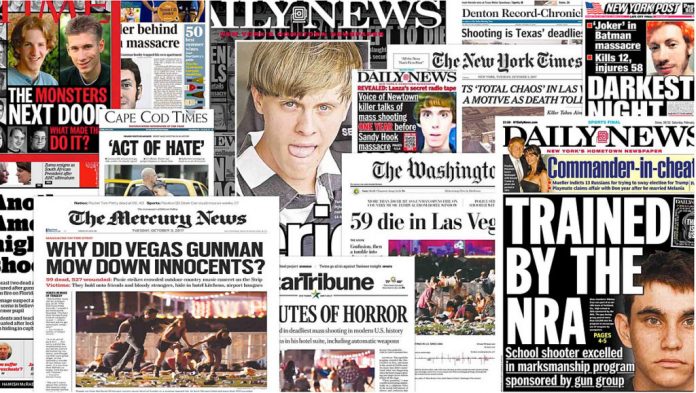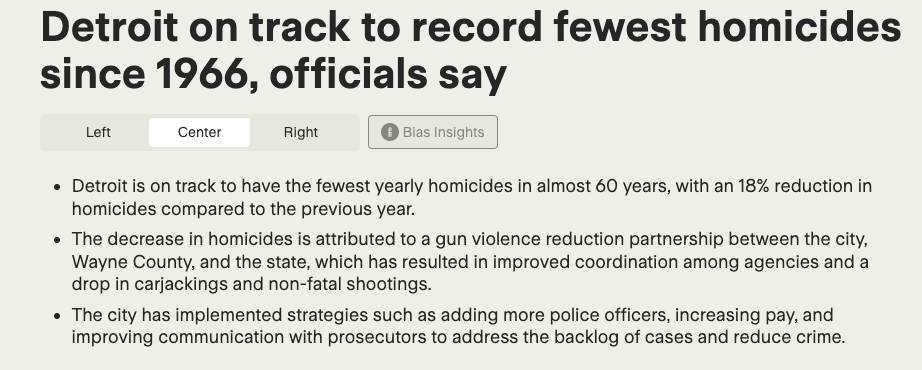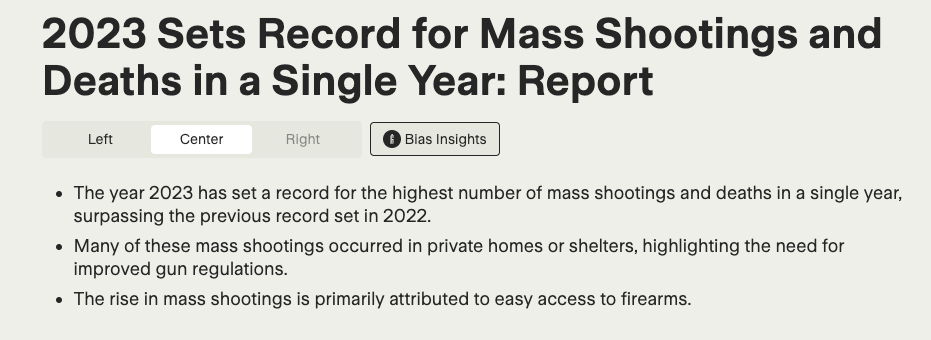
First, the good news. Homicide in my area dropped 18% from last year which puts us at the lowest level since 1966. The six decade record is good news for Oakland and Wayne counties, and Motor City herself. Good job Detroit.
2022 was a record year for violence, as were 2020 and 2021, with the COVID-19 and George Floyd riots spike leading to nationwide strife on levels we hadn’t seen for many years. We still haven’t hit early 90’s bad, but it isn’t great. There are signs it is getting better in many ways and in most places.

But that isn’t all ways or all places.
The Hill has a honestly titled report out that details the US hit a record in mass shootings with 4 or more deaths, recording 38 in 2023. This beat last year, 36, and was the highest we know since 2006. We are on pace to have a lower number of mass shootings of 4 or more injuries than 2022 and 2021, but the number of incidents with 4 or more deaths peaked.
This is why language matters so much in reporting. Context also matters. Most of these 4 or more death events were domestic. The most significant shooting of the year was Maine where a US veteran shot 31 people, killing 18, before being found dead days later from an apparent suicide.

The issues are complex and the mass killing events, while a “record” number in a year, are still too rare to well quantify as an issue nationally. Stress is a complicated compound issue and we can’t find too many commonalities other than stress and usually a final triggering event. Mental health issues, paranoia, traumatic personal events, traumatic world events that play into biases, all of these things have at some point been the trigger or trigger combination for violence on this scale. But it is still rare.
For reference, agricultural deaths due to accidents with tractors kill more people, 241 dead (2021), than were killed in mass shootings of this 4+ scale, 197 dead (2023). Am I saying we shouldn’t look at mass shooting deaths? No, they are eminently preventable because they require a hostile motivated person or persons to occur. With fewer so motivated people we have fewer deaths. The comparison is that in accident prevention we have the same base level formula, if we mitigate the circumstances for accidents we have fewer.
The problem in both is we cannot eliminate all the the factors for the negative event. Tractors need to be able to do certain things that put people working around them at a certain level of physical risk. Comparatively people cannot be divested of their capability for hostile acts and we cannot divest them of the ability to cause harm, a partial token removal of the ability to cause harm is without value.
Let’s take a look at the ‘preventative’ measures that are currently popular in the gun control mainstream and if they would reduce or eliminate the ability of a shooter to kill four people.
Assault Weapon Ban, Partial (No Mandatory Confiscation/Buy Back)
- Most proposals do not remove any currently held firearms, tens of millions are in circulation and will remain so for decades. This does not reduce the risk of death to four people
- Only makes new transfers illegal. Illegal transfer status does not curb current felonious use and would be unlikely to significantly impact extreme cases like mass shootings. This does not reduce the risk of death to four people.
Magazine Capacity Limit, 10 Rifle and 15 handgun
- 10 round magazine of rifle ammunition is more than enough to kill four people
- 15 round magazine of handgun ammunition is more than enough to kill four people
- Hundreds of millions of standard capacity magazines are in circulation.
Fixed magazine
- Making the magazine remain affixed to the firearm does not reduce or eliminate the ability to kill four people
Universal Background Check
- Every study about background checks associated with point-of-sale checks, whether commercial or private and on handguns or all guns, found no conclusive evidence that background checks have an influence on mass-shootings. Background checks therefore have no influence on the reducing harm in incidents of mass shootings where four or more deaths occur.
- Many of the deadliest mass shootings in the nation have occurred with people who passed their background checks and who had no disqualifying criminal or mental health record at the time of purchase. Other incidents circumvented the background check in some trivial (simple theft) or violent (murder) manner.
- The collection of studies by Rand, linked in the first bullet point, actually associate greater likelihood of a mass shooting after background checks in 4 of the 5 policies studied.
Caveat to the UBC point, the data is thin. Mass shootings are (thankfully) too rare an event to track across this causatively, but the best data we have available suggests an increase events after background checks are implemented, not a decrease.
How could that be? Because correlation isn’t causation. If you harken back to my context article taking apart the ‘Terror on Repeat’ nonsense, you’ll notice that the rise in mass shootings also correlates strongly with the rise of 24hr news cycle and then real time social media consumption. Background checks happen to have been implemented for firearms transfers in the 90’s with NICS right about the same time as the rise of the 24hr news cycle gave mass shooters their instant world stage.
So, in all likelihood, background checks are mostly a feel good measure.
That’s 2023. Hopefully we see the world continue the chilling trend, maybe faster, in 2024. Two increasingly divisive wars on the global scale and high government distrust do not make it an easy forecast.



